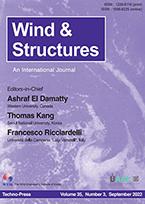CFP: MEDIASCAPE Journal of Film and Media Studies - TIME 2015
Mediascape REVIEWS 2015
- URL: http://www.tft.ucla.edu/mediascape/
- Call For Paper Type: Regular
- H2 Index: 0
MEDIASCAPE, UCLA's open-access peer reviewed journal for film, television, and digital media, is now accepting submissions for its next issue. This next issue considers the theme of "Time" in Cinema, Media and Visual Culture. Guidelines for submissions to the REVIEW section is below.
MEDIASCAPE is proud to publish high quality work that combines the cutting edge of critical and historical analysis with an impulse to explore the possibilities of digital publishing. We are eager to work closely with authors to publish high-quality work that embeds audio-visual content, video essays, and/or interactive applications. Our journal also publishes traditional scholarly essays, but we encourage all authors to consider graphic and video aids. The deadline for submissions is January 31, 2015.
Our Fall 2013 issue, "Urban Centers, Media Centers," and our archive of past issues are available free online at http://www.tft.ucla.edu/mediascape/
MEDIASCAPE is peer-reviewed and published annually. Matthias Stork, Co-Editor-in-Chief, welcomes your queries, comments, and suggestions by email at mediascape@tft.ucla.edu.
__________________________________________________________
Perhaps the property most unique to cinema and media is inclusion of time as a defining element. What is a film if not time applied to a photograph? It is this specific attribute that differentiates cinema and media from the other visual arts and from which all other methods and techniques derive.
Only in these arts and only through their use of time is time travel possible. We all know time as a constant stream but through editing and non-linear storytelling that stream can be diverted, redirected, and dammed up altogether.
Last year alone has featured a number of notable films that played heavily with their relationship to time: "The Grand Budapest Hotel," "Get on Up," "Gone Girl," "The Imitation Game," "Interstellar," "Wild," "Boyhood," "Edge of Tomorrow," "X-Men: Days of Future Past" to name a few. Nonlinearity may be less common in videogames, but as the two mediums converge several games have begun to play with these storytelling methods: "Uncharted 3: Drake’s Deception," "Bioshock Infinite," "Assassin’s Creed," "The Legend of Zelda: Ocarina of Time." While this divergence from strict linear narrative storytelling is nothing new, it is worth considering how cinema and media’s use of time structurally, narratively, as a plot mechanic operates both in its effectiveness and functionality.
Interactive entertainment is more likely to use time as a stretchable and squeezable factor in gameplay. Bullet-time, slow-motion, and even magical ocarina’s that alter time’s flow treat time as just another aspect that works itself into gameplay. As processing power in modern hardware increases the developer’s willingness to play with time only becomes more pronounced.
Time is also a factor to consider when casting a critical eye on a subject. If cinema history is a history of any one subject, it is a history of images. Time and time again, images are reintroduced to build upon, reinvent, or subvert their initial meaning. Time builds nostalgia and also tears away contemporary sentimentality, star power, and resources.
In this issue’s Review section, we ask contributors to examine these aspects of time creatively and to apply them to their critical pieces. Reviews should focus on media where time is utilized in a specific way or should focus on how time has affected the subject itself, as queried earlier. Further interpretation is allowed and encouraged.
Submissions are due by June 30th, 2015, and should be between 1200 and 4500 words. For further information, discussion on ideas, and to submit your piece for consideration please contact Reviews editor Dan Gvozden at dangvozden@ucla.edu and fleuryjb@g.ucla.edu.














